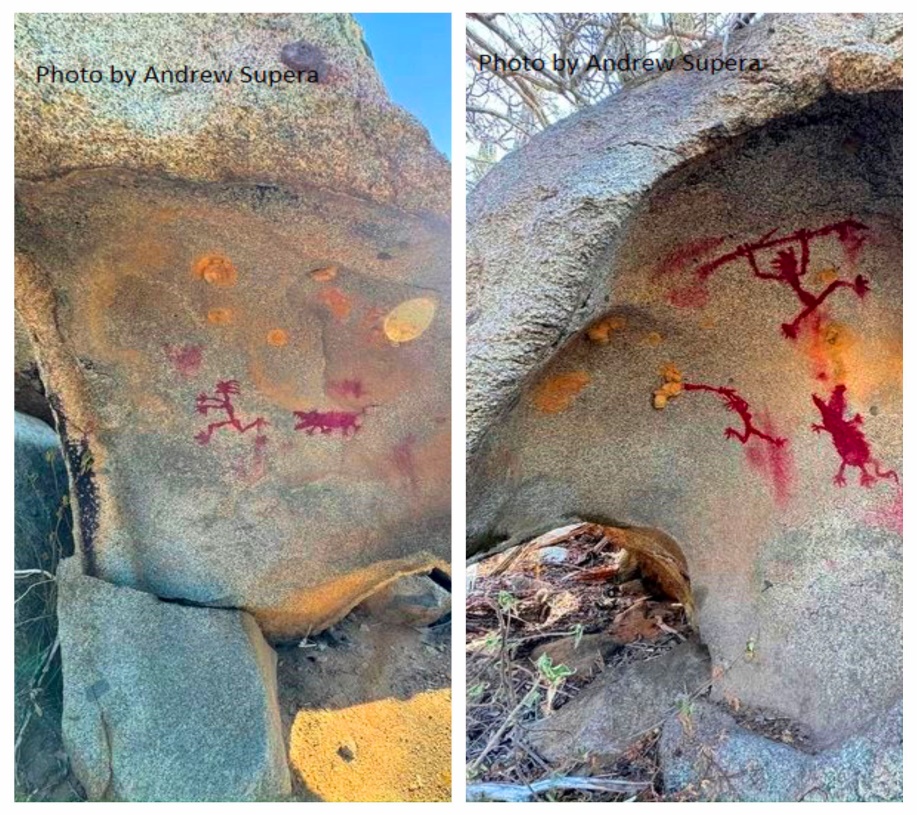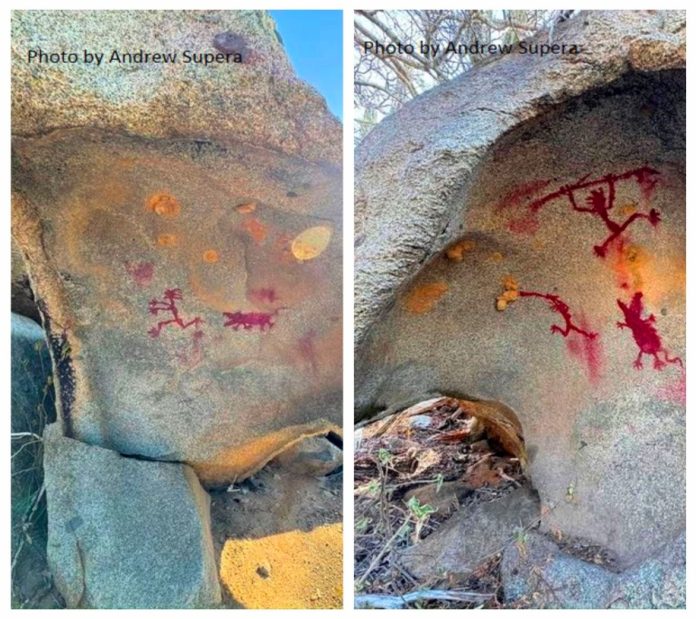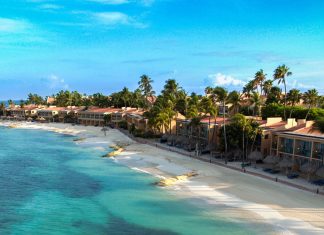Booking a magical glimpse inside Etnia Nativa
Article by Etnia Nativa call us 592 2702 and book your experience!
Each week, Island Insight shares a story of Aruba through the eyes of Etnia Nativa, involving you with the mystical aspects of the island, its ethnic as well as colonial heritage, sharing ancestors’ histories and their survival challenges, and at the same time, repudiating any attack on it.
During this episode, we focus on some photos captured by the lens of Andrew Supera and labeled online as fake petroglyphs. His post caught our attention and sparked our subsequent outrage. This represents significant damage to our cultural identity and a clear attack on the geological as well as the archaeological heritage of the island. This type of damage must be treated with great care and know-how in order to recover the affected area’s original state. It is the primary obligation of local officials to protect the area in question in order to preserve our heritage. We believe that this attack has been premeditated since the vandalism occurred in a tourism-representative area such as Casibari.

Art, in its oldest expression, was essential as a form of communication. Rock art depicted everyday life, from hunting to belief systems, and was a way to document history and communicate culture; however, it was not to be compared with what later became street art or graffiti, which initially was considered a vandalic act.
Vandalism of public property is a criminal activity that has been growing over the years around the world. These acts originated in popular revolts that sought to reach the “state” through the depredation of statues, buildings, and urban artistic performances. They are human actions based upon dissatisfaction within democratic and ethical behavior.
In general, the causes of vandalism are related to communication difficulties and feelings of exclusion and injustice; the individual practices it as a “defense” against the feeling of frustration and helplessness. It is obvious that Aruba is being overexploited without considering the negative consequences that may result from practices that damage the ecosystem, the demographics, and the attitude of our population. The negative impact is being expressed through passive vandalism that gives voice to the desperate cry of our citizens through expressions like NO MORE HOTELS, a cry that can be erased with a little paint, but that does not change the regrettable reality that many locals feel when they justify the unjustifiable through a vandalistic expression.
To combat vandalism, it is necessary to invest in integration, education, awareness, and monitoring actions. To involve the population in the preservation and care of public property and review laws that have strict punishment for those who commit this type of crime. Periodic inspections by qualified personnel are essential all around the island to raise awareness of the situation by acting as soon as possible in such events of damage.
It is necessary to value our history and culture forged by our ancestors, take care of the iconic places that represent identity and collective memory, promote the care of public spaces, and value our existence. It is urgent to promote civility towards collective enjoyment
While rock art is expressed through simple symbols like lines, open-hand palm expressions, or more complex scenes with animals and objects, this continues to represent the daily reality of primitive man and its mystical motifs. Graffiti, although positioned as an element of urban decoration, contributes a parallel artistic outcry to the unfortunate reality that Aruba experiences, becoming a silent scream in response to the deterioration of the moral, ethical, and civic conduct of a democratic society that we once lived in as an island nation.
Let’s create awareness that rock art is our heritage. Contrary to popular belief, it was not created by some underdeveloped cannibal inhabitants of the mythical epoch, and it does not reflect buried treasure maps. What rock art does provide is a means of understanding the sacred and mundane perspectives of life.
If you want to capture the essence of Aruba, book a magical glimpse inside Etnia Nativa, where Anthony, our cultural columnist, will immerse you in a learning adventure, sharing the native effect through his magnificent museum-home built with reused materials and full of the island’s heritage. WhatsApp +297 592 2702 or etnianativa03@gmail.com

















